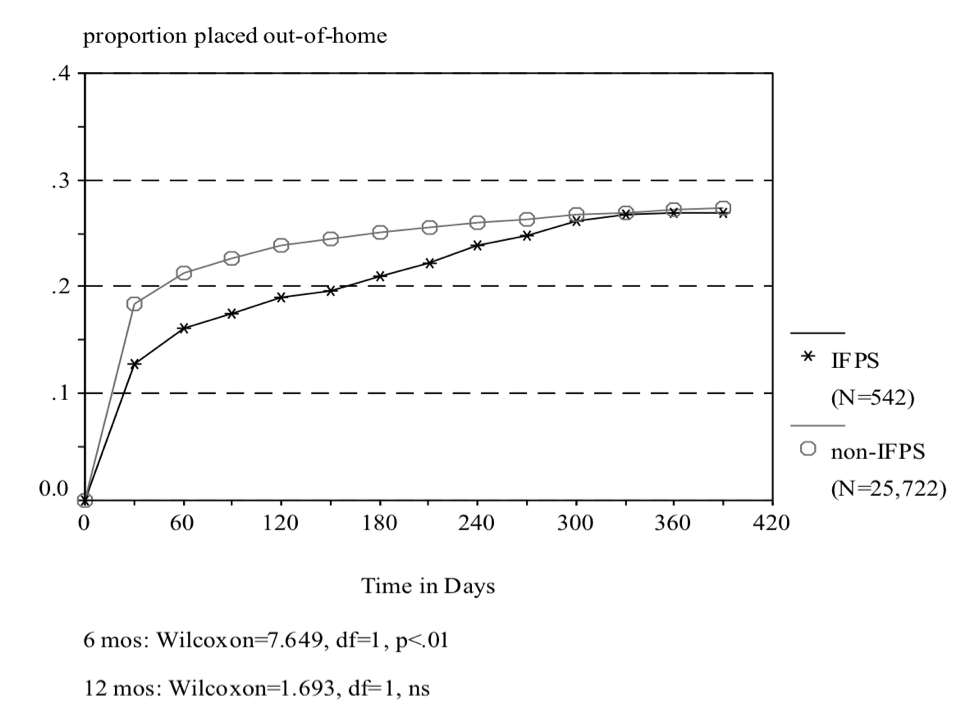From its inception, IFPS has been an all-inclusive service that is completed within four to six weeks. Early IFPS programs had no provision for step-down services. This does not mean that families received no additional services. IFPS therapists frequently refer families to other services prior to the close of the IFPS intervention. But the question remains: are IFPS step-down services ever justified? If so, when is the optimal time to offer them?
I undertook a study of this issue in 2000 in the state of North Carolina. What I discovered was a “window of vulnerability” that is depicted in the following chart by means of placement rates following the IFPS intervention:
Note “window of vulnerability” from 120 days to 270 days post service.
The placement dynamics evident suggested that secondary interventions or additional services should be offered to families in the first 6 months following termination of the IFPS intervention.
Beginning in 2004, IFPS programs in North Carolina were required to track families for 6 months after receiving IFPS services:
- Contact families monthly, inquire about functioning & needs.
- Conduct a more comprehensive assessment of families during the contacts at 3 months and 6 months.
- Verify that families were receiving the services that they were supposed to receive after IFPS and see if additional in-home services are needed.
IFPS workers were authorized to re-open services to the family for a maximum of 2 weeks and a maximum of 2 times during the 6 month follow-up period.
- Between 2004 and 2008, 999 families received follow-up contacts
- 593 received 3-month comprehensive assessment
- 381 received 6-month assessment
- Families had option to decline being contacted in the future; some families could not be located
Family contacts during 6 months following case closure
|
Month 1 |
Month 2 |
Month 3 |
Month 4 |
Month 5 |
Month 6 |
|
| Number of Families Contacted |
999 |
791 |
662 |
535 |
471 |
407 |
| Average Hours of Phone Contacts |
1.07 |
.92 |
.92 |
.77 |
.73 |
.78 |
| Average Hours of In-Person Contacts |
1.89 |
1.33 |
1.28 |
1.19 |
1.11 |
1.20 |
| Average # Worker Initiated Contacts |
1.66 |
1.43 |
1.42 |
1.39 |
1.35 |
1.32 |
| Average # Family Initiated Contacts |
1.55 |
1.35 |
1.32 |
1.02 |
.92 |
.95 |
| Number of Case Re-Openings |
17 |
10 |
8 |
7 |
7 |
5 |
During the period 2000–2004, prior to implementation of follow-up contacts and possible additional services, the post service placement rate (attrition rate) during the first 6 months was approximately 7%, based on AFCARS data.
Among families receiving follow-up services between 2004 and 2008, post-IFPS service placement rate was:
- 3.0% during first 3 months,
- 1.5% during months 4–6.
Conclusion
Follow-up services during first 6 months post-IFPS services appear to reduce the placement (attrition) rate by about one-third.
_______________
Posted by Ray Kirk, Researcher
Dr. Kirk’s research on the child welfare system includes assessment tools, IFPS, reunification, and prevention.

